Uncategorized
Needs of Many New City: Urban Development in India
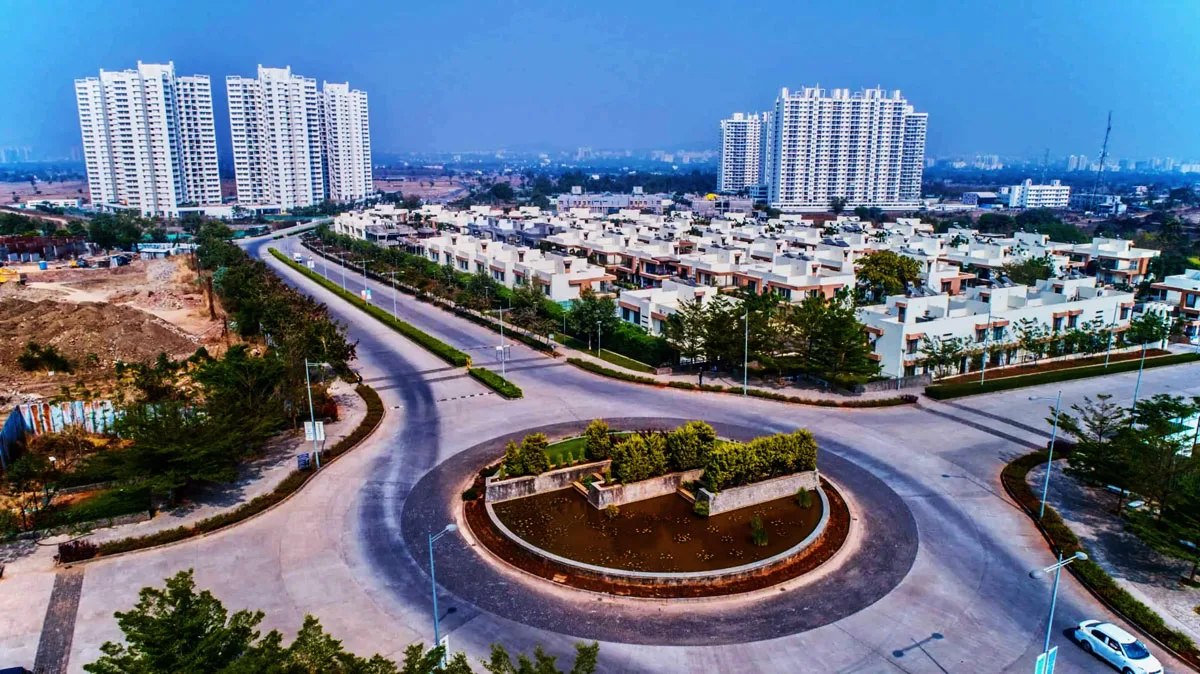
Urban development is the well-organized development of a landscape for a large population which includes residential, commercial, and industrial areas with all kinds of amenities like infrastructure, water, electricity, etc.
Urban Development is a significant challenge for India. With the growing population and migration to cities, there is a need for the planned and systematic development of cities.
Table of Contents
Best-planned cities in the world are:
- Singapore City, Singapore
- Chandigarh, India
- Zurich, Switzerland
- Seoul, South Korea
- Copenhagen, Denmark
- Washington D.C., USA
- Amsterdam, Netherlands
- Brasilia, Brazil
- Paris, France
The Indian government has allocated a budget of Rs. 15,000 crores in 2023 for urban development, with a focus on transport, water infrastructure, and urban governance.
There are two main aspects of urban development:
- New-city development
- Old city modernization.
The creation of new cities and upgrading existing cities to meet the needs of a growing population are the most essential for the future of India. Both aspects require careful planning and implementation.
It is hard to find property in cities currently in prime locations at a handy cost. At the far locations, it is not advised to invest in property for the future. After a certain population growth in a city due to an already settled population faces problems, modernization of the existing city is difficult like underground sewage, water, and electricity supply.
Urban development in existing cities
Considerable changes for existing cities for modernization to meet requirements with increment in population and new technology are:
- Widening of Roads.
- Install underground supply of electricity line instead of Wires on electricity poles.
- Beautification work (Plantation, lightning).
- Restructuring of sewer line
- Sewage treatment
- Smart Street light provide
- Ensure public safety by use of Cameras, AI, and other technology.
- High-speed Internet facility.
New City Development
Due to the fast growth of population and migration towards cities for employment, there is a need for the planned and systematic development of cities.
According to the Indian government’s Ministry of Housing and Urban Affairs, a total of 100 smart cities are developed. and the total urban population affected is 99,630,069.
Effective urban planning can help create sustainable and livable cities, while poor planning can result in congestion, pollution, and social inequality.
For future investment in property consider Smart developing new cities. Future smart cities are pre-planned and with all amenities and green energy projects which have a low need to travel to access required things. Educational institutes, shopping centers, and garden areas are at nearby walking distance of a residential area. Urban planning is a critical component of urban development. It involves the design and management of the physical environment of cities, including land use, transportation, and water infrastructure.
5 under Develop Smart cities in India
- Dholera Smart City, Gujrat
- NAINA (Navi Mumbai Airport Influence Notified Area) smart city Raigad, Maharashtra
- YEIDA (Yamuna Expressway Industrial Development Authority) smart city Noida, UP
- Naya Raipur smart city Chhattisgarh
- GIFT (Gujarat International Finance Tec-City) Smart city Gujrat
Mixed Plan Urban Development
Creating mix-use and mix-income neighborhoods can save more energy for transport. Mix use means Residential, educational, and commercial areas should be mixed in a street or area, which allows low movement for management of owners, labor, and families for basic needs and work. This type of planning mindset reduces pollution and increases the growth rate in the per capita income of the city.
A better plan for infrastructure
Develop multi-use infrastructure for new Urban Develop city. For Smooth movement of traffic provide fewer traffic lights and more circles. Also, develop pedestrian areas and cycling lane parallel to the road. Cycling promotes good health and zero pollution to the environment.
Well-planned cities in India will determine the fate of India. When planning is done well, our cities will become climate-resilient and water secure. New ideas for urban planning can include the use of GIS-based master planning, the development of different types of planning tools, efficient human resources, and transport planning.
Transport planning is an essential component of urban development. It involves the design and management of transport infrastructure, including public transport systems, roads, and highways. Efficient transport planning can help reduce congestion, pollution, and travel times.
Urban development is a complex and challenging task. However, with careful planning and implementation, we can create sustainable and livable cities that meet the needs of our growing population. By focusing on capacity building, collaboration with the private sector, and developing centers of excellence, we can take urban planning in India to a new level.
Read Also: NEOM: Futuristic Mega City Project Of Saudi Arabia
some suggestions for urban development in India:
- Promote sustainable urban planning: Encourage the development of compact, mixed-use neighborhoods that are walkable, bike-friendly, and transit-oriented.
- Prioritize public transport: Invest in public transport infrastructure such as buses, trains, and metros. Ensure that public transport is accessible and affordable to all residents.
- Implement smart parking solutions: Encourage the use of technology to optimize parking spaces and reduce congestion on roads.
- Develop green infrastructure: Promote the use of green spaces, parks, and trees in cities to help reduce pollution and improve the quality of life for residents.
- Upgrade water and sanitation infrastructure: Invest in upgrading water supply and sewage systems to ensure that residents have access to clean water and adequate sanitation facilities.
- Promote mixed-use development: Encourage the development of mixed-use buildings that include residential, commercial, and retail spaces to create vibrant, diverse neighborhoods.
- Encourage community participation: Engage with communities to understand their needs and involve them in the planning and development process.
- Use data and technology: Use data and technology to inform urban planning decisions and improve the efficiency of city services.
- Promote energy efficiency: Encourage the use of renewable energy sources such as solar and wind power, and promote energy-efficient buildings and appliances.
- Prioritize disaster preparedness: Develop disaster preparedness plans and invest in resilient infrastructure to ensure that cities are prepared to respond to natural disasters and other emergencies.
Uncategorized
11 – Aggregate Test -All Type & Importance
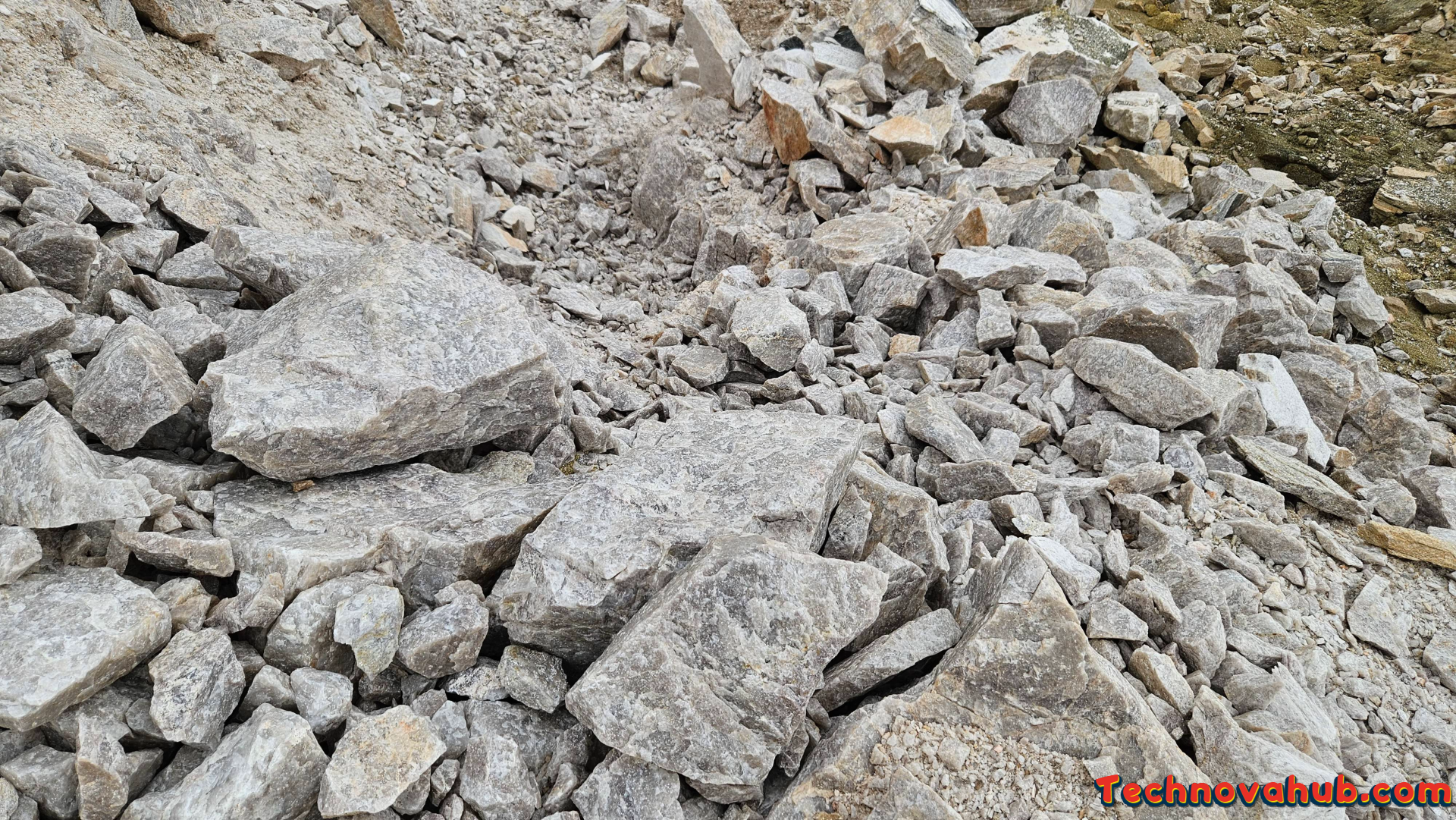
Aggregate test is the most important substance in the construction industry. The strength of the structure after joint strength depends on the strength of the aggregate.
Aggregate indeed plays a crucial role in the construction industry, particularly in the production of concrete. Concrete is a fundamental building material used in various construction projects, and its strength and durability are significantly influenced by the quality of its components, including aggregate.
Required characteristics of aggregate
The study of aggregate can improve the strength of construction as well as money. Here are some key points about the importance of aggregate test in construction:
- Strength and Durability: Aggregates are the primary component in concrete, constituting about 60-75% of the total volume. The properties of the aggregate, such as its strength and durability, directly impact the overall strength and durability of the concrete structure.
- Load-Bearing Capacity: Aggregates provide the bulk and rigidity to concrete, contributing to its load-bearing capacity. The arrangement of aggregates in the mix affects the compressive strength of concrete, which is crucial for supporting structural loads.
- Economy: Properly graded and high-quality aggregates can enhance the workability of concrete mixtures, allowing for more economical use of cement. This is important as cement is typically a more expensive component of concrete. A well-designed mix with the right proportion of aggregate can optimize the use of cement without compromising strength.
- Volume Stability: The expansion and contraction of concrete due to temperature changes and moisture variations can be influenced by the type and quality of aggregate used. Aggregates that are resistant to changes in volume help ensure the long-term stability of the concrete structure.
- Bonding with Cement Paste: The interface between the aggregate particles and the cement paste (the glue that holds concrete together) is critical. Proper bonding is necessary to achieve the desired strength and durability. The surface characteristics of the aggregate can impact this bonding.
- Shape and Size: The shape and size of aggregate particles also play a role. Well-graded aggregates with a variety of sizes can result in a denser and more workable mix. The shape of the particles can affect the surface area and, consequently, the amount of cement paste needed for adequate bonding.
Above all parameters are used to identify aggregate before use on-site in construction.
Type of Aggregate test :
- Particle Size Distribution (Gradation Test):
- Purpose: Determines the distribution of particle sizes within an aggregate sample.
- Method: Sieves of different sizes are used to separate and measure the particles.
- Shape and Texture Tests:
- Flakiness and Elongation Index Test:
- Purpose: Assesses the shape characteristics of aggregate particles.
- Method: Measures the ratio of the elongated or flaky particles to the total mass.
- Angularity Number Test:
- Purpose: Quantifies the angularity of aggregate particles.
- Method: Involves measuring the volume of voids between angular particles.
- Flakiness and Elongation Index Test:
- Specific Gravity and Absorption Test:
- Purpose: Determines the specific gravity and water absorption of the aggregate.
- Method: Involves measuring the weight of the aggregate in air and in water to calculate specific gravity and absorption.
- Bulk Density and Voids Test:
- Purpose: Measures the density and void content of aggregate.
- Method: Involves determining the bulk density and calculating the percentage of voids in the aggregate.
- Soundness Test:
- Purpose: Evaluates the resistance of aggregate to disintegration due to weathering.
- Method: Aggregates are subjected to cycles of wetting and drying in a sodium sulfate or magnesium sulfate solution.
- Los Angeles Abrasion Test:
- Purpose: Measures the resistance of agSogregate to abrasion and impact.
- Method: Aggregates are placed in a drum and rotated, causing abrasion and impact on the particles.
- Crushing Value Test:
- Purpose: Determines the aggregate’s resistance to crushing under a gradually applied compressive load.
- Method: Aggregates are subjected to a specified load and the percentage fines generated is measured.
- Impact Value Test:
- Purpose: Measures the aggregate’s resistance to sudden impact.
- Method: Aggregates are subjected to a standard impact test using a testing machine.
- Moisture Content Test:
- Purpose: Determines the moisture content of aggregates.
- Method: Involves weighing the aggregate before and after drying to calculate the moisture content.
- Alkali Aggregate Reactivity Tests:
- Alkali-Silica Reactivity (ASR) Test: Evaluates the potential of aggregates to react with alkalis in concrete.
- Alkali-Carbonate Reactivity (ACR) Test: Assesses the potential reactivity of carbonate aggregates.
- Organic Impurities Test:
- Purpose: Identifies the presence of organic materials in the aggregate.
- Method: Aggregates are immersed in a solution, and any color change is observed.
IS Code for Aggregate are shown as:
| IS CODE | AGGREGATE TEST |
| IS 2386 – 8 | Methods of Test for Aggregates for Concrete – Petrographic Examination |
| IS 2386-7 | Methods of Test for Aggregates for Concrete, Part VII: Alkali Aggregate Reactivity |
| IS 2386-6 | Methods of test for aggregates for concrete: Measuring mortar making properties of fine aggregates |
| IS 2386-5 | Methods of test for aggregates for concrete: Soundness |
| IS 2386-4 | Methods of test for aggregates for concrete: Mechanical Properties |
| IS 2386-3 | Methods of test for aggregates for concrete: Sp. Gravity, Density, Voids, Bulk Density & Water absorption |
| IS 2386-2 | Methods of test for aggregates for concrete: |
| IS 2386-1 | Methods of test for aggregates for concrete: Particle Size & Shape |
Read Also : Concrete blocks: Types, Tests Pros & manufacturing process
Read also : Most Recommended Is Codes For Aggregates In Construction
Uncategorized
Amazon Sale 2023 : Get prepare for special offers of the year


Amazon sale 2023 date has been announced which we all indian wait of a year for big discounts in shopping.
Upcoming Big sale start from 8 october 2023. Amazon’s flagship event Great Indian Festival will go live on Sunday, Oct 8, with early access for Prime members going live on Saturday, Oct 7 at midnight.
Table of Contents
Some of items price in upcoming sale has been revaled and many item discount price will be available soon.
So, get ready for upcoming shopping season of the year.
Amazon Event Landing Page: Visit Here
Amazon Sale 2023 Shopping Link Categories wise:
- Mobile Phones: Click Here
- Laptops & Smart Watches: Click Here
- Home & Kitchen: Click Here
- Fashion & Beauty: Click Here
- Television & Appliances: Click Here
- Daily Essentials: Click Here
- Amazon Brands: Click Here
- Amazon Devices: Click Here
- Gaming, Books, Personal Care Appliances: Click Here
If you wish to shop before stock out get ready and add items in wishlist before sale starts.
Read Also: Container Homes: Moveable, Affordable, and Ecofriendly
How to choose best deals ?
Amazon price trackers tools
Use Amazon price trackers tools for check best prices with duration it helps in shop in that price of should wait for a price drop.
Some of price tracker tools name are:
1. keepa
2. price history
3. Earny
4. PriceBefore
Check Reviews and Rating
Which item you want to buy, would be purchase by someone before so check product reviews where you can understand about product.
Today’s Deals
Click on “Today’s Deals”, which is dedicated to show special offers and discounts on that time available.
Uncategorized
Concrete mixer machine: Guide to Efficient Mixing Equipment
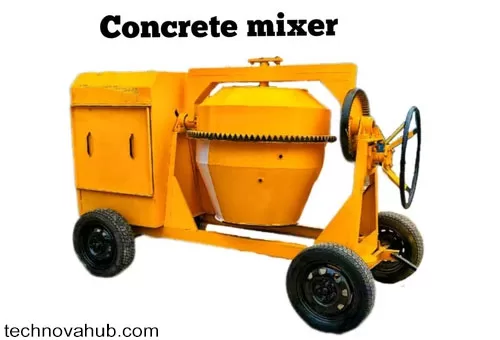
A concrete mixer machine, also known as a cement mixer, is a device used to combine cement, water, and aggregates (e.g., sand, gravel, or crushed stone) to form concrete. This mixing process ensures that the concrete’s components are evenly distributed and results in a homogenous mixture that is suitable for construction purposes.
Table of Contents
Concrete mixers machine come in various sizes and types, but the most common ones are:
Types of Concrete Mixture Machine
1. Drum Mixer:
This is the most common type of concrete mixer machine, where the ingredients are mixed by tumbling them inside a revolving drum. The drum can be tilted to discharge the concrete. Drum mixers can be further classified as:
- Tilting Drum Mixers: The drum can be tilted to pour the concrete.
- Non-Tilting Drum Mixers: The drum is fixed, and the concrete is discharged by opening a chute at the bottom.
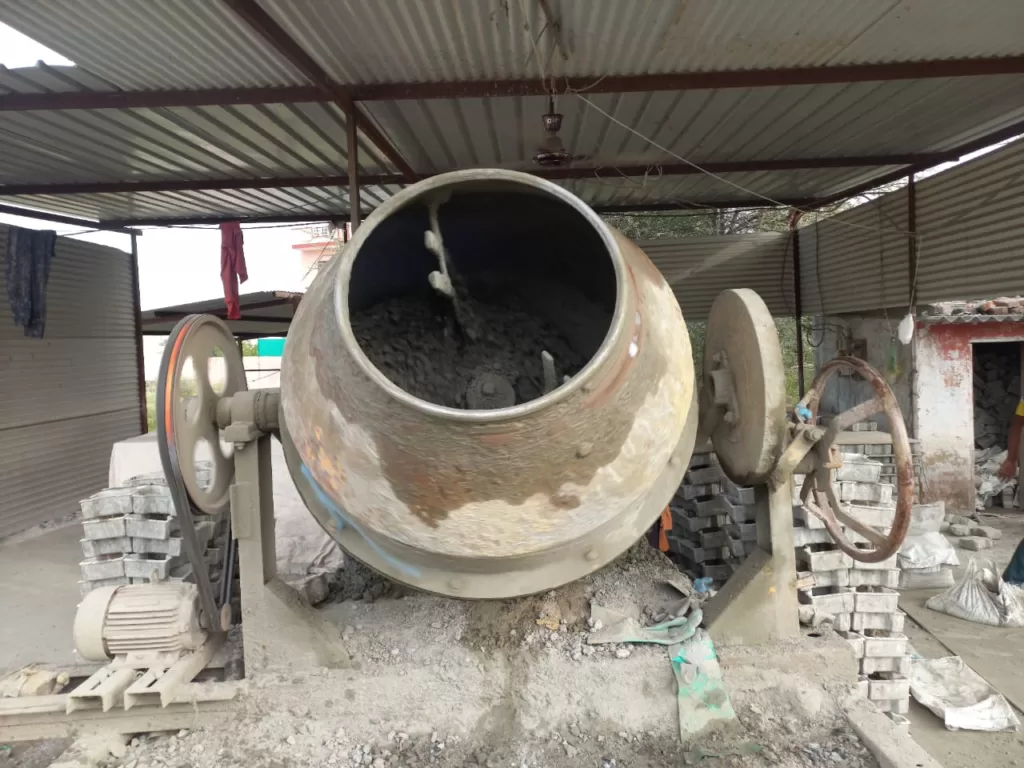
2. Pan Mixer
This type of mixer has a stationary mixing pan and blades that rotate around a vertical axis. The ingredients are mixed as the blades move through the material.

3. Twin Shaft Mixer
This type of mixer has two horizontal shafts with paddles that counter-rotate, ensuring thorough mixing of the materials.
4. Vertical Axis Mixer
In this mixer, the shaft is vertical, and the mixing action is similar to a pan mixer but on a larger scale.
Concrete mixer machines are widely used in various construction projects, including buildings, roads, bridges, and other structures. They are available in different capacities, ranging from small portable mixers suitable for DIY projects to large stationary mixers used in commercial construction.
When operating a concrete mixer machine, it’s essential to follow safety guidelines, wear appropriate protective gear, and ensure that the machine is used and maintained correctly to prevent accidents and ensure optimal performance. Additionally, different types of mixers and concrete formulations may be suitable for specific construction applications, so it’s essential to choose the right equipment and mix design for the project at hand.
Read Also: Best Cement for Paver Block Manufacturing
Reference : Concrete mixer
HOW TO CHOOSE THE RIGHT CONCRETE MIXER machine?
1. Size
Power supply
Durability
portability
Which Concrete Mixture Machine is used Most commonly?
Mostly Drum Mixture machine is used. It is used due to its ease to handle for loading cement, sand, and aggregate as well as unloading concrete. Tilting Drum Mixers are used commonly at small scales. No chute opening is available for unloading, so no cement slurry waste and homogeneous concrete mixture occurs.
What size is to be considered while purchasing a new concrete mixture machine?
When loading and unloading of concrete and material are done by labor manually then choose a capacity of 1.5 bag cement concrete mixture.
What is the price of the RCC Concrete mixer machine?
The concrete Mixture machine costs 50,000 rupees to 2,50,000 rupees. It depends on type of mixture and size of the mixture.
Motor-operated Tilting Drum Mixers costs around 75,000 rupees.
Disclaimer
Please note that the information on technovahub.com is designed to provide general information on the topics presented. The information provided should not be used as a substitute for professional services.
-
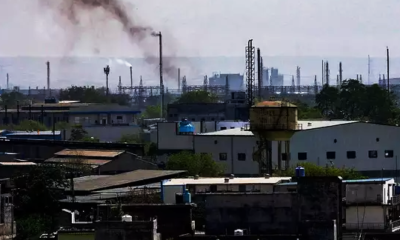
 Business2 years ago
Business2 years agoBhiwadi: An industrial city You Should Know About
-
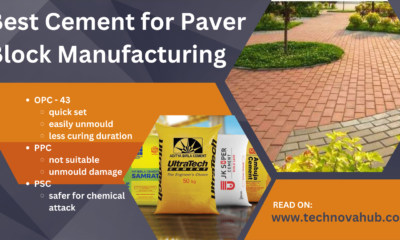
 Uncategorized1 year ago
Uncategorized1 year agoChoosing Best Cement for Paver Block Manufacturing: A Comprehensive Guide
-

 Tech2 years ago
Tech2 years agoBest AC brands in India 2023
-

 Indian Culture2 years ago
Indian Culture2 years agoTop 5 Destinations to Celebrate Holi 2023 in North India
-
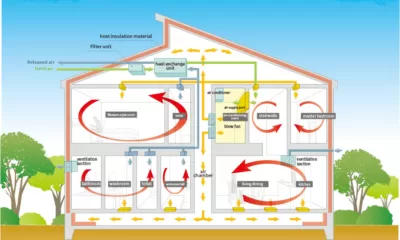
 Uncategorized1 year ago
Uncategorized1 year agoOptimizing Ventilation and Air Circulation in Architectural Building Design: Enhancing Indoor Comfort and Health
-
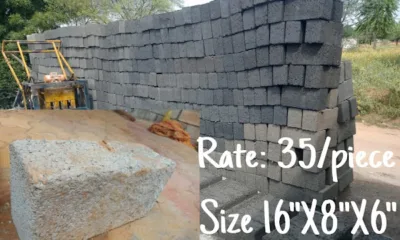
 Uncategorized2 years ago
Uncategorized2 years agoConcrete blocks: Types, Tests Pros & manufacturing process
-

 Business2 years ago
Business2 years agoSolar Panels: 3 Types, Working & Manufacturing Process
-

 Tech2 years ago
Tech2 years agoE-waste Management Project: Effects, Challenges, and Solution




